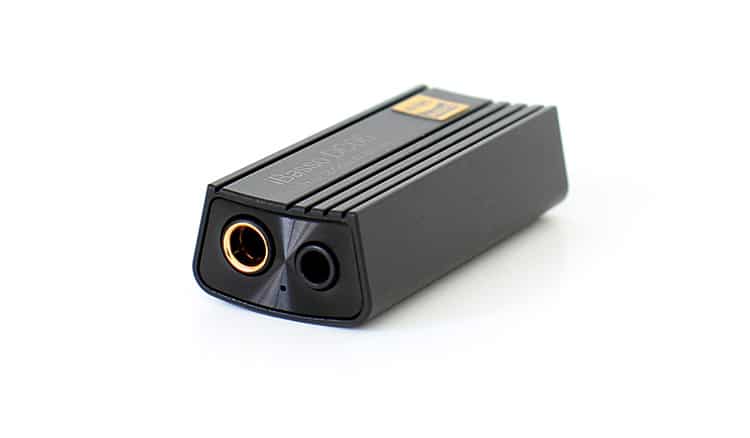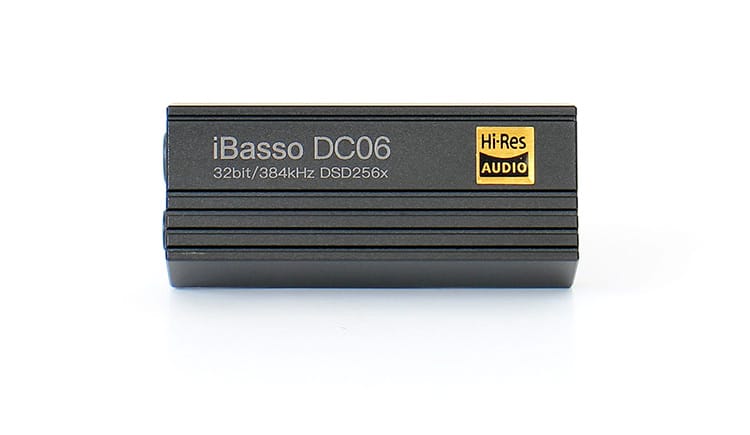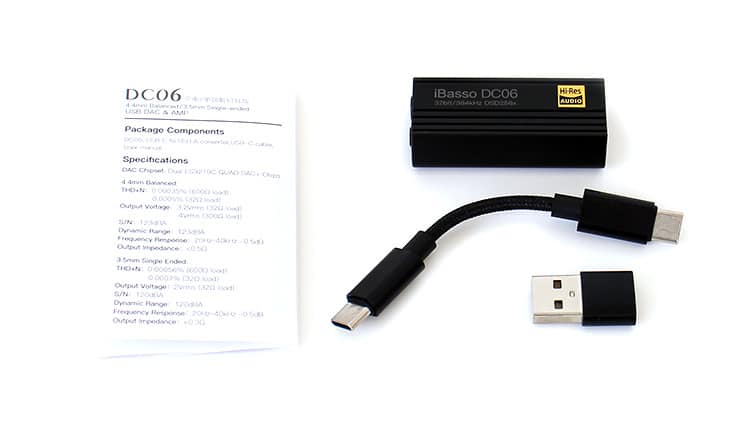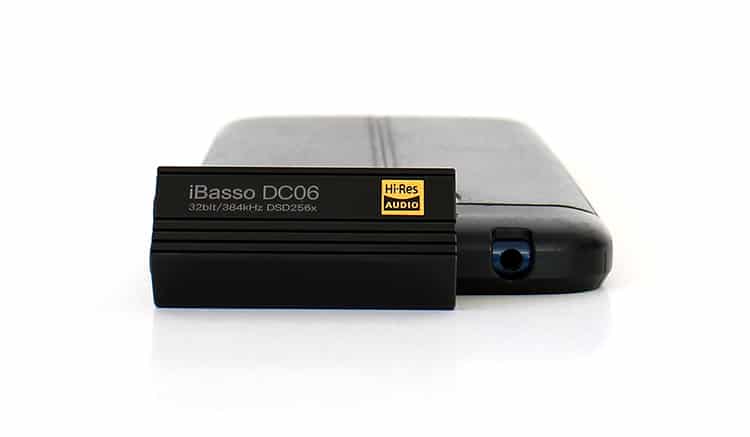For our review today we look at the new iBasso DC06 which is a dongle-type dual-DAC MQA-capable balanced portable amp and DAC. It is priced at $119.
Disclaimer: This sample was sent to us in exchange for our honest opinion. Headfonics is an independent website with no affiliate links or status. We thank iBasso for this opportunity.
To learn more about iBasso products previously tested on Headfonics you can click here.
Note, that this article follows our latest scoring guidelines which you can read up on here.
iBasso continues to release dongle DACs and recently released their sixth iteration. Our first contact with an iBasso dongle DAC was back in 2019 when we put the DC01 to the test to see what it can do and it did fairly well for the modest price tag and for its size.
The iBasso line of dongle DACs follows a straight sequence of numbers and although the recently released DC05 for example had a lower price tag compared to the DC04 it also had a lower power output rating but it still managed to highlight some small improvements and refinements in design.
So, the DC06 should be a step above naturally if the improvement pattern holds true but to me, it seems the DC06 is a blend or a merger of the two previously released iBasso dongle DACs as far as features and performance go.
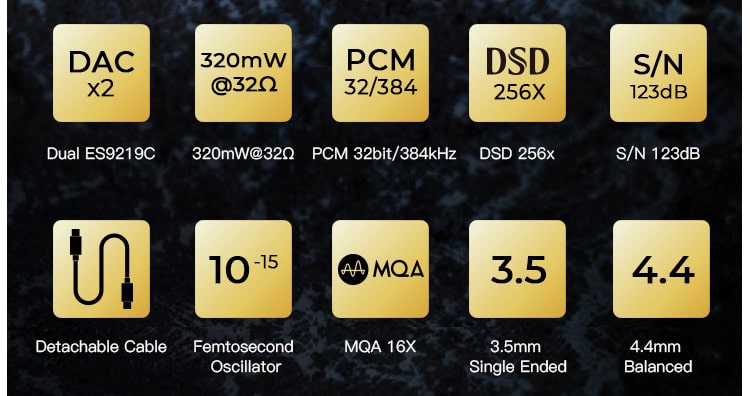
Tech Highlights
iBasso seems to have taken an espial path with their dongle DACs. They released the DC04 which was rather powerful employing a pair of CS43131 DACs but only had a single 4.4mm balanced out.
Then they released the DC05 with dual ES9219C DACs. The DC05 had a reduced power output and contrasted with a single 3.5mm. Both models have an attached USB cable for input connectivity.
This time around the iBasso DC06 has dual headphone outs and went with a removable wire design. The iBasso DC06 has the 4.4mm balanced out and the 3.5mm single-ended out from both previous models on one end and a female USB-C port on the other end of the dongle. I say they got it right this time around and employed the removable wire which is my favorite design.
Another peculiar factoid is that the DC06 uses the same dual ES9219C SABRE HIFI quad DAC SOCs used on the DC05 but the DC06 claims twice the power output.
The addition of the balanced end circuitry probably did the trick since the DC05 had no balanced topology. Another similarity between the two is the NDK Femtosecond oscillator employed in both models.
But at this point, I guess it’s safe to say that the DC06 is now iBasso’s most powerful dongle DAC up to date when it comes to raw power output and compared to all their previous dongle DACs. Power output actually amounts to a little under the DC05 and the DC04’s combined added power.
Digital Formats
There are more similarities and the compatible digital format list reads the same as the DC05 since both models share the same model SOC set. To start, The DC06 does MQA and 16x unfolding.
The way the DC06 does the MQA 16x unfolding is that 2X is software rendered and an additional 8x is done by hardware rendering.
The DC06 can also handle PCM at up to 32 bit/ 384 kHz plus DSD up to 256. If I’m not mistaken these two digital formats do in fact run completely hardware rendered on the DC06.
The DC06 seems to handle rather high bit rates well and always remained stable for me even when I threw in some high bit rate format files.
Power
If you combine the total max power output of the DC04 and the DC05 which are rated at 195mW at 32Ω and 140mW at 16Ω respectively then you get a total of 335mW per side. The DC06 is rated to output a maximum amount of 320mW on a 32Ω load.
This power rating is the source of the above statement that the DC06 is iBasso’s most powerful dongle DAC up to date. But not only that, the DC06 seems to gain around 4 extra points on the SN ratio specification bringing it up to 123dB compared to 119 off a single ES8219C. It gains 2 points on the 121-rated DC05 which has 2 identical ES9219C DACs.
The noise floor seems to be the second most thought-out specification on dongle DAC purchase day. I make no claim to be a bench tester but the iBasso 1.55µV rating seems very low and also beats out the single chip’s 2.1µV spec sheet rating.
Design
The past iBasso dongle DAC iterations all had a smooth and rounded edge body design and were all made of metal. But this time around iBasso broke the iBasso dongle DAC mold and incorporated a cooling fin design. The metal construction remained and the shell seems more robust this time around.
The DC06 thick skin cooling fin shell seems to serve a purpose and not just to protect the internal components but to also act as a functioning passive cooling radiator.
The DC05, for instance, has the same two DAC SOCs but had less power output so it used less power compared to the DC06 and these fins tend to cool things down well.
It seems that iBasso kept the DC05 underclocked and tweaked for low power consumption and for a low noise floor but the DC06 seems to have the dual DACs tweaked for better performance since it does get warm to the touch but the temperature is nothing to worry about. I would just consider it slightly warm running and mobile battery life is basically cut in half.
The one aspect that I would look to change about the design aspects is the 4 pointy edges on the top of the DC06 shell which could annoy in certain situations and tend to poke your hand. A more rounded-off design would certainly feel better in the hand.
Packaging & Accessories
Packaging is the customary iBasso dongle DAC transparent polymer bubble with all the contents placed inside a custom-molded high-density foam. The main unit is displayed upfront and the surrounding cardboard label displays the product details.
Inside you’ll find a basic manual with some usual information and you also get a dual-sided USB-C cable that measures 4 inches exactly but I found it to be a touch stiff. The cable has a cloth shield and for some reason, mine had both plugs not perpendicular to each other and I could never get the cable to lay flat.
There’s also a full-sized USB-C to USB-A male converter but no Lightning or iPhone connectivity cable was included with this sample. However, at the retail point, iBasso is providing a free USB-C to lightning cable with the DC06 so you are pretty much covered.
The DC06 seems to run on anything, iOS along with Windows and Android. It even ran off my Samsung Chromebook.
Sound Impressions
Summary
The slight warm character of the DC05 was retained. Still, there is more energy behind the sound signature and it’s most likely due to the extra power output which translates into a slightly punchier, smite character. Bass quality and output are certainly better highlighted due to the small amount of extra power over other weaker DACs.
The frequency response is excellent with good bilateral extension. I bet the frequency response would draw out quite linear and flat if measured. Overall, it seems rather neutral and no area seems to dominate the sound panorama.
The all-important and hated hiss is kept to zero basically and this device along with most other dongles nowadays seems to employ some type of mute feature that drops output down to zero when there’s no music being played. However, this circuitry doesn’t seem to affect dynamics which are very good on this dongle.
The soundstage seems to be widely presented with a tall panorama but I sensed a personal amount of height and a slight interruption in imaging. There seems to be good placement, technical abilities are rather good and everything seems to be well placed.
Synergy
Power
The iBasso DC06 amplifier section uses a dedicated power supply with a synchronous DC to DC converter, a low noise charge pump, and an LDO or low drop voltage regulator that helps in obtaining the most power by supplying steady voltage.
Although the DC06 uses the same chips as the DC05, this particular implementation of an independent power source for the amplifier section steps up the DC06 drivability level to a rather elevated level.
Some of the IEMs I used with the DC06 are the iBasso’s own highly underrated and wonderful IT07, FiiO FD7, and the FH9. Also, some full-sized cans like the Sivga SV023, HIFIMAN Sundara, and some Dekoni blue cans based on the Fostex T50RP MK3 to see how the DC06 responds to some challenging loads. None presented any drivability challenges.
If the DC06 can push T50s to an acceptable level then only a few headphones out there would present a challenge connected to the DC06. You don’t get jaw-crushing performance and the DC06 with this set presented some low-end distortion when the volume went past 80% but the volume level was an acceptable level at that 80%.
Pairing
I did most of the listening from either my Windows 10 x64 PC or my Android mobile device. I used FLAC files, some DSD files, and Foobar. The mobile device was used with the Jet Audio pro player but I could use the DC06 with anything really and it does so with a consistent level of performance.
One note, I did some prior research and found consumer write-ups that claimed the iBasso DC06 was too loud and unsafe and I could only assume two things.
First, they are using very efficient IEMs. Second, they did not download iBasso’s UAC app which includes a 64-step volume control that gives the user an ample amount of adjustability.
This in particular will help those who will use the DC06 with highly sensitive IEMs and need fine control. Another benefit this app gives the user is the ability to set max volume.
At the same time if you use a mobile device the UAC app works independently from the mobile device’s volume control which gives the user even better control.



